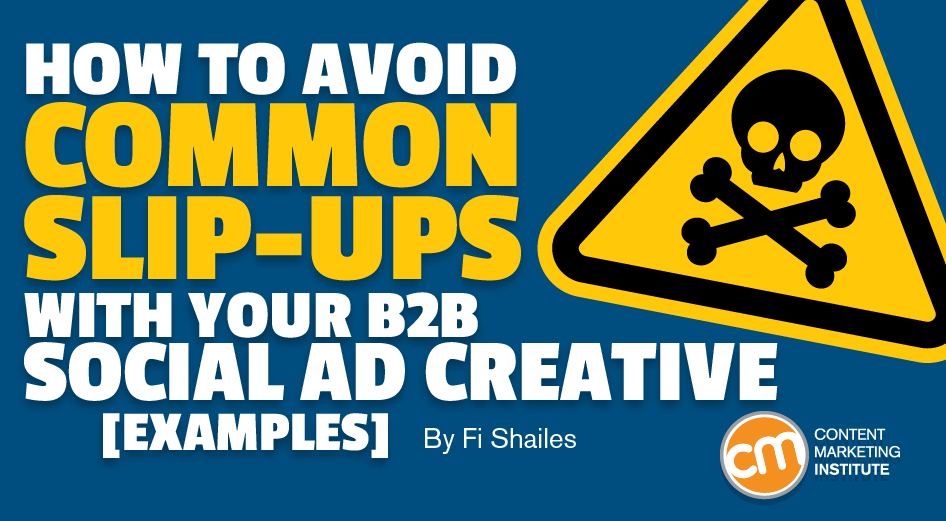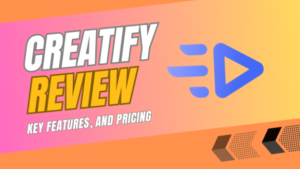
Content marketers spend a lot of time developing content. But when it’s time to promote that carefully created content in social ads, they don’t have the same flourish.
Relatively recent research shows B2B ad creative often misses the mark regarding quality and impact. The B2B Institute, a LinkedIn think tank, says although marketers carefully measure ad media spend, optimizing ad creative doesn’t feature anywhere near as heavily in our psyches. It’s often neglected, as indicated in this graphic revealing 75% of B2B ads are rated one star or less.

75% of B2B social ads earn a one-star rating from consumers.
While these low ratings might seem like worrying news for B2B marketers, it actually presents an immediate opportunity to reassess and improve your social ad creative to promote and get your content consumed.
As a social strategist, I regularly witness common mistakes in social advertising, and they’re made by even the biggest of brands. Among them:
- Weak, poor quality, or common visuals
- Conflict between ad content and format
- Unclear, hard-to-digest messaging that doesn’t resonate with the target audience
- Lack of continuity among ad components
By preventing these potential problems, you’ll better position your digital ad to be seen and recognized to be relevant by your target audience, so it earns the desired click. Here are four tips on how to do just that.
1. Create thumb-stopping visuals
Develop strong, engaging visuals that entice viewers to pause a moment. It’s widely accepted that people scan ads. Over the years, eye-tracking studies have identified common patterns of digital reading and social media platforms have shared what they’ve found, too.
Create visuals that get viewers to pause their thumbs when they come to your ad, says @Fi_digitaldrum via @CMIContent. Click To Tweet
In the image below, I explain how readers would usually consume this digital ad from Hootsuite. First, the compelling visual with the prominent words “30 Day Trial” will be seen. Then, the eye will go to the bold statement below the image, Start Your Free Trial Today,” followed by the line below it in a smaller font size, “Trusted by 18 million users worldwide.” Lastly, their eyes will go to the line above the image that reads: “Try Hootsuite for 30 days and start managing your social from one simple dashboard.”

Without that strong central image, Hootsuite wouldn’t have attracted viewers to give it more than their split-second attention.
Software company Asana consistently makes an impact with its social ads. With a low-key color palette, modest-looking fonts, and a smart style, their ad creative makes a bold impression on newsfeeds to encourage viewers to stop the scroll. Asana often uses statistic-based visuals to pique interest and connect with the target user as they did in the second ad below.
The graphic in the first ad includes the cover of the e-book they’re promoting with the words, The Ultimate Guide to OKRs, prominently displayed.

The second ad is a pie chart showing a 24% slice with the accompanying text to explain 24% of employees in Australia experienced burnout four or more times in the last year.

Sometimes visuals can have a big impact by looking just different enough to stand out. Take media publication The Economist. They commonly use graphic design to create thumb-stopping moments for users.
In the first sponsored content ad to promote an article on the backlash of gender ideology at universities, the art contains a globe-type circle with two women in graduation caps who have brightly colored lines to symbolize talking. One of the women is upside down.

In the second promoted content ad, a colorfully illustrated chicken is flexing their bicep to promote an article about how chicken became the rich world’s most popular meat.

These images create intrigue because they don’t tell the full story and they lack words to explain them. They’re also different in style compared to typical ads on LinkedIn.
Use intriguing images that pique interest and differ in style to attract ad clicks, says @Fi_digitaldrum via @CMIContent. Click To Tweet
HANDPICKED RELATED CONTENT:
2. Choose the right ad format for your content
Why string out a straightforward message about your promoted content over eight carousel cards when a two-card carousel or a single image ad will do?
Assess how your promotion fits into the available formats each time you kick off a new paid social campaign. Some content will work well as a video or a sponsored poll, but some things won’t.
In this example, LinkedIn Sales Solutions perfectly demonstrates that carousel-promoted content doesn’t need to include many cards. In this case, three does the job just fine – the first asks a question, “How have UK sales professionals and their buyers changed their behavior since the pandemic?” The second card gives an answer, “For one, 45% of UK buyers now want to make purchase decisions remotely.”

The third and final card promotes the content offer: “Discover more trends in the State of Sales 2021 Report, UK edition.”

That formula can work well for many content product ads: Identify the audience’s challenge (understanding buyer behavior after the pandemic), include one answer (make purchase decisions remotely), then offer the content solution (e-book on the state of sales).
3. Write copy that resonates, entices, and nails the point
I really like the recent social ads from GWI, a market research firm. They’ve managed to use minimal copy to promote the insightful content they have up for grabs.
The first is an ad for its report on social media trends in 2022. On the prominently displayed image, the text poses a question: “What on earth is the metaverse?” The line of text above it is one stat from the report and a call to action: “53% of social users are baffled by the metaverse. If you’re one of them, get the lowdown in our 2022 trends report.”

The second ad, “Thanks, I got it on Instagram,” includes a simple question before the CTA: “How has social commerce changed in 2022? See what makes shoppers tick in our flagship trends report.”

4. Ensure synergy among the creative components
Yes, users typically scan social ads, making the dominant image, video, or other visual the central element. But, that doesn’t mean that the other elements need any less attention.
After all, even with all the credible research and eye-tracking studies out there, we still can’t be 100% sure about how users are going to process the social ads served to them. It’s therefore important to consider how the ad hangs together as a whole.
I’ve seen many social ads where the copy makes total sense, but it’s out of kilter with the visual creative or vice versa. It can lead to a quick win by spending just a bit of time upfront getting all those elements right.
Adobe’s Creative Cloud brand creates social ads that are easy to read, quick to digest, and nice to look at because everything from top to bottom and right to left makes sense and is consistent. It doesn’t matter which part you look at first, you know what the content offer is straight away.
These two ads exemplify that technique. Both include a visually appealing dominant image and headline. The first, “New Ways to Collaborate in a Hybrid World”, includes a one-sentence lead-in describing the content’s purpose and a CTA button to watch the video.

The second also includes the one-sentence explainer as both the lead-in and a small text – further emphasizing the message/purpose – appearing below the headline: “Growth. It’s a mindset.” That may seem like a really repetitive way to tackle copy. However, this approach makes the offer really clear when you only have milliseconds to get across your message.

You don’t have to repeat the same thing top to bottom; you could experiment with different combinations that tell a story or set a scene in a cohesive manner.
Slack did it in this ad for its content about how to win the best talent, using a stat in a large font in the dominant image: “75% of Australians want flexible work hours.” Above it, the sentence in a smaller font above it echoes the concern and identifies the solution: “Move past the 9-to-5 schedule to reinvent work. Stand out from other companies by offering more flexibility for your people.”

Design success for your content promotion social media ads
Finally, don’t credit a single ad for a campaign. Testing the creative is important, too. Invest time in developing and distributing multiple versions in each content ad campaign. It allows you to identify what’s working and what’s not so that you can make informed tweaks to the creative – adjustments that can boost, strengthen, or even revitalize ad campaign performance.
By spending a bit more time and consideration upfront, you can avoid the common errors and missteps with social ad creative. You can’t guarantee every single paid content promotion will bring amazing results, especially since you don’t control how the platforms serve up your ads. But you can make sure every creative asset is optimized, well-built, and as impactful as it can be.
HANDPICKED RELATED CONTENT:
Cover image by Joseph Kalinowski/Content Marketing Institute




